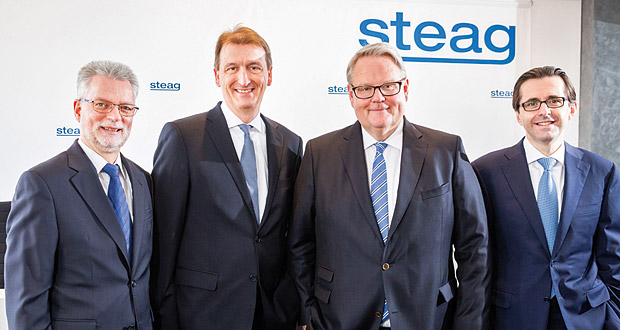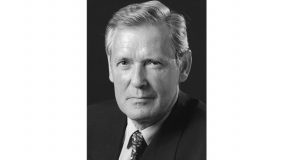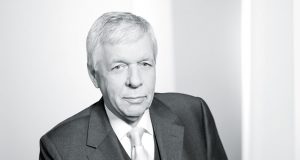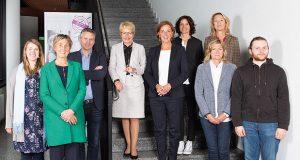Shareholders’ investment in the STEAG Group has once again paid off. The Essen-based energy company is transferring 45 M € in profit for the 2018 business year to its owner, Kommunale Beteiligungsgesellschaft (KSBG). “We faced up to the far-reaching challenges in the energy industry at an early stage,” said Joachim Rumstadt, Chairman of the Board of Management of STEAG GmbH, during the annual press conference at the company’s headquarters in Essen (Figure 1). The energy company continued its process of stabilisation in 2018.
2019 began with a landmark decision. At the end of January, the Commission on Growth, Structural Change and Employment (WSB Commission), appointed by the German Federal Government, issued the recommendation that Germany should gradually phase out lignite and hard coal-fired power generation by 2038. “The phasing out of coal has now been set out as an official objective. STEAG has the right strategy to shape the journey there,” says Rumstadt. “I am confident that we will master the challenges ahead.”
For STEAG, one of the leading power and heat suppliers in Germany, the WSB Commission’s final report contains numerous favourable points of departure. These relate, e. g., to the two STEAG power stations in Saarland which have been part of the grid reserve since April 2017 and classified as system-relevant by transmission system operator Amprion because they are indispensable if reliable energy supply is to be ensured at all times. They also relate to the construction of new combined cycle gas turbine (CCGT) plants at several of the Group’s existing power station sites.
In addition, STEAG could benefit from the WSB Commission’s view that climate-friendly heat supply should be given higher priority in the future. A systematic expansion of the district heating supply on the basis of environmentally friendly combined heat and power generation in the Rhine-Ruhr metropolitan region would improve the national CO2 balance and help Germany to achieve its ambitious climate protection targets.
Like many other energy companies, STEAG is in the midst of a far-reaching transformation process. However, the STEAG management reacted to the consequences of the energy transition at an early stage with the “STEAG 2022” program in particular. At its core, implementation of the program is about increasing efficiency, optimising the portfolio and occupying new growth areas. The measures initiated by the STEAG management have led to an improvement of 107 M €. 55 % of that was accounted for by increased efficiency, 30 % by earnings from active portfolio management, and 15 % by growth initiatives.
As a result of the lower overall capacity utilisation at STEAG’s power stations and the final closure of three power station units in the previous year, Group sales in 2018 fell from 3.6 bn € to 2.9 bn €. The consolidated net income also declined compared with 2017. In terms of earnings before interest and taxes (EBIT), STEAG clearly exceeded the earnings forecast issued at the beginning of the business year, which predicted a decline of 30 %. The EBIT fell by only 19 % to 160 M € in 2018.
International business made a major contribution to this good result. Its share of the Group’s EBIT increased to 57 % in 2018. At 12.7 M €, the consolidated profit is once again in the black. As in the previous year, 45 M € will be transferred to the shareholder KSBG.
“Energy markets abroad offer huge potential. STEAG’s dedicated staff are consistently exploiting the opportunities offered by foreign markets and deploying their expertise to make full use of the earnings potential there. The municipal owners are fully behind STEAG’s international commitments,” emphasises Guntram Pehlke, Chairman of the Supervisory Board of STEAG GmbH.
For the 2019 business year, the STEAG management forecasts an increase in sales to 3.1 bn €. Earnings before interest and taxes are expected to improve by 20 to 25 % from the 2018 level. Investments in the amount of 230 M € are planned – a figure which is around one third higher than in the previous year. (STEAG/Si.)



